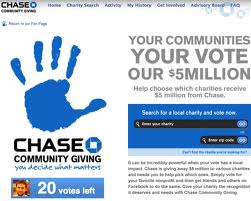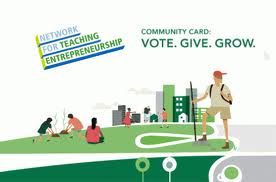Good morning, DonorDreams readers! As the Beatles sang so many decades ago, “I get by with a little help from my friends“. As you know, I’ve been relying on a number of guest bloggers to get me through a busy period. Today’s guest post is from Adam Weinger over at Double the Donation blog.Adam shares I hope you enjoy this morning’s post. Here’s to your health! ~Erik
How Your Nonprofit can use Matching Gifts to Grow Corporate Relationships
By Adam Weinger
Double the Donation
 Matching gifts are a great way for your nonprofit to receive twice as many donations from donors and their employers. While this benefit is obvious, did you know that matching gifts can also help your nonprofit create and cultivate relationships with corporations?
Matching gifts are a great way for your nonprofit to receive twice as many donations from donors and their employers. While this benefit is obvious, did you know that matching gifts can also help your nonprofit create and cultivate relationships with corporations?
Nearly every company is looking to expand and improve its culture of corporate social responsibility. Your nonprofit can help these businesses achieve their goals while you simultaneously promote matching gifts to your donors!
Here are three ways that your nonprofit can use matching gifts to cultivate corporate relationships.
If your nonprofit has existing partnerships with corporations that provide stellar matching gift programs to their employees, thank those companies for encouraging employee giving and helping your nonprofit accomplish its mission.
Take a look at Double the Donation’s list of the top matching gift companies to see if any of your corporate partners made the cut!
1. Press releases
Sending out a press release is one of the best ways for your nonprofit to put the spotlight on your corporate partners. Not only is this a highly visible and simple way to let people know about the good that your organization’s corporate partner is doing, but it also gives you an opportunity to let others know more about your nonprofit in general.
A sample press release should include information about:
- Past donations.
- How long your nonprofit has been partnered with the company.
- How many employees have taken advantage of the matching gift program.
- The other types of corporate giving programs that the company offers.
- Any other pertinent information.
Press releases draw attention to the philanthropy of the companies that help your nonprofit and educate the general public about your nonprofit and the work that you’re doing. Plus, the company’s employees feel good knowing that they work for a business that regularly gives back to causes that they feel deeply about. They’re a win for everyone involved!
For help on getting started forming partnerships, check out these best practices.
2. Use your nonprofit’s website to acknowledge corporate partners
Many donors are already using your organization’s website to make their donations. Why not use the opportunity to promote the generosity of the corporations that offer matching gift programs?
If you already have a dedicated matching gift page on your nonprofit’s website, add some information about companies that have outstanding matching gift programs to educate donors about doubling their donations while simultaneously thanking and acknowledging those companies.
If you don’t have a dedicated matching gift page on your website, set one up so that donors know exactly how they can maximize their donations and can research the companies that offer them.
Additionally, promoting your corporate partnerships and their matching gifts can help ensure that those partnerships thrive and continue down the line.
For ways to use ePhilanthropy to secure matching gifts, check out this article.
3. Recognize corporate partnerships and matching gift programs at events
Whether your nonprofit is hosting a gala, auction, walkathon, or other fundraising event, you can make the most of a captive audience to thank your corporate partners and laud the matching gift programs that they offer their employees.
Obviously, don’t overshadow the corporate sponsors that have made your fundraising event possible. But it’s a good idea to give a shout out to all of the companies that have helped your organization in one way or another.
When you publicly announce and promote the businesses that have assisted your nonprofit with their matching gift programs, you not only strengthen the existing nonprofit-company relationship that you have, but you also let other individuals know about matching gifts.
* * *
There are many benefits that nonprofit-corporate partnerships can produce. When those companies offer matching gift programs, your nonprofit is doubly rewarded. Recognizing your corporate partners online and in person is your nonprofit’s way of acknowledging their generosity and drawing attention to their outstanding matching gift programs.





